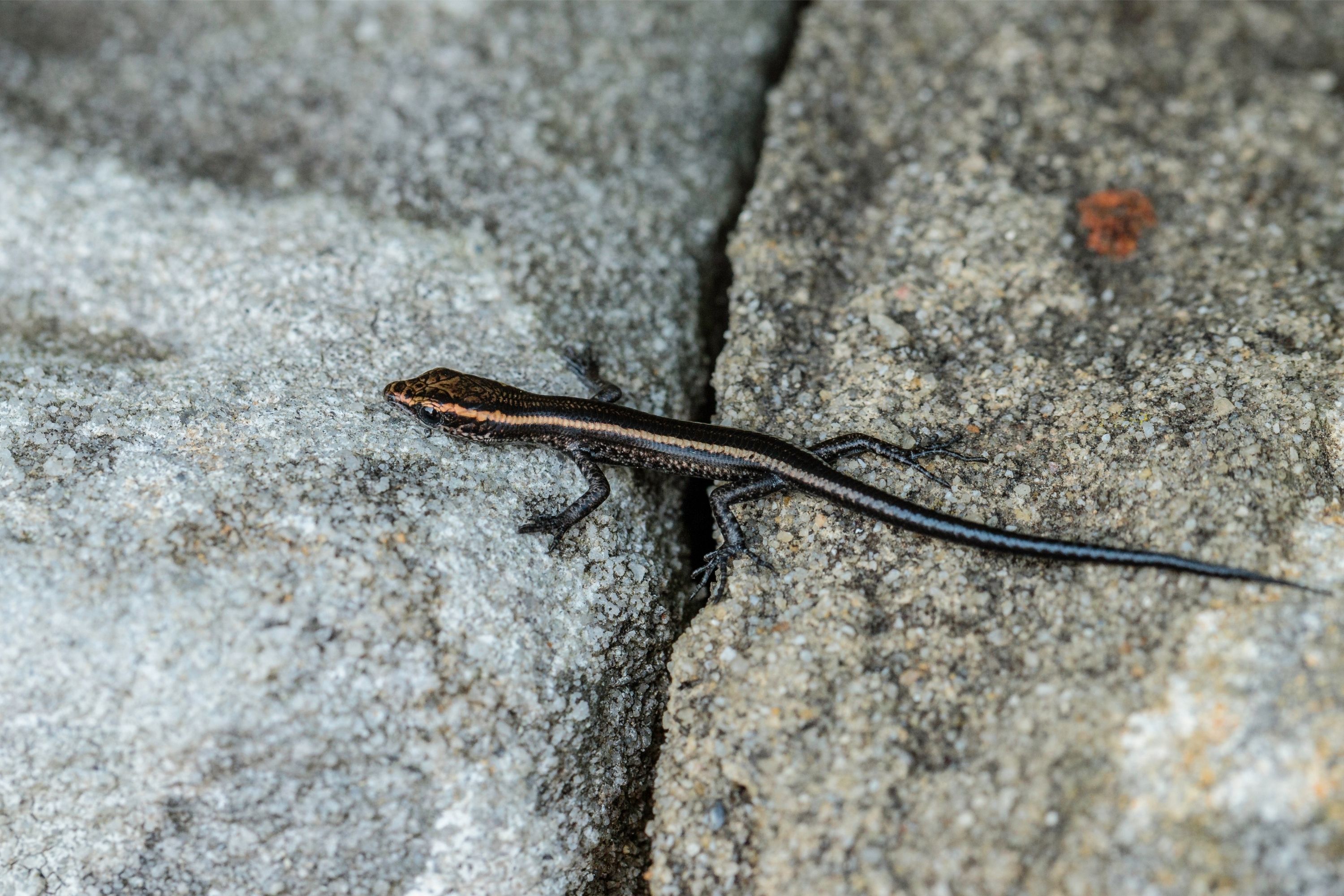Rainbow skink
(Lampropholis delicata)

Description
Lampropholis delicata, the delicate skink, dark-flecked garden sun skink, garden skink, delicate garden skink, rainbow skink or plague skink, or the metallic skink is native to Australia and invasive in New Zealand and Hawaii where it is commonly found in gardens. The species is known for their color dimorphism between males and females; striped morphs and non-striped morphs exist in this species, however the stripe is less pronounced in males. This species' diet consists of a wide range of prey, such as spiders, bees, larvae, and termites. Mating occurs in the late summer and generally one clutch of 2 to 4 eggs are laid per year by each female. The delicate skink is more common in suburban gardens than in adjacent native bushland. It has a moderate body with a medium length, slender tail. Its scales are smooth. The back and sides are greyish-brown to rich brown, often with darker and paler flecks. A narrow yellowish-brown stripe is usually present on the outer edge of the back. The species can also have two distinct forms: a prominent white stripe and a less prominent white stripe. This dimorphism is not strictly distinguished by gender. Lampropholis delicata were accidentally introduced into Lord Howe Island, a remote oceanic island between Australia and New Zealand, in the 1980s and subsequently introduced into the Hawaiian islands. Upon introduction, these lizards have rapidly spread themselves across the islands. On Lord Howe Island specifically, they reside in low-elevation vegetation communities. They are a diurnal species whose activity varies seasonally, in which activity peaks during the months of November and December. Sexual dimorphism is present in L. delicata, in which males have broader, longer heads and females have larger abdomen and body sizes. Female reproduction takes place in the spring season and more commonly in the late summer, ranging between the months of September and February. A positive correlation exists between the clutch size and body size of the female, and although it is common for clutch sizes to vary between 1 to 7 eggs, the average clutch size is between 2 to 4. Communal egg nests are also common, with anywhere between 11 and over 200 eggs. Tail loss and subsequent regeneration occurs frequently with these lizards but is observed most commonly in females and adults.
Taxonomic tree:







